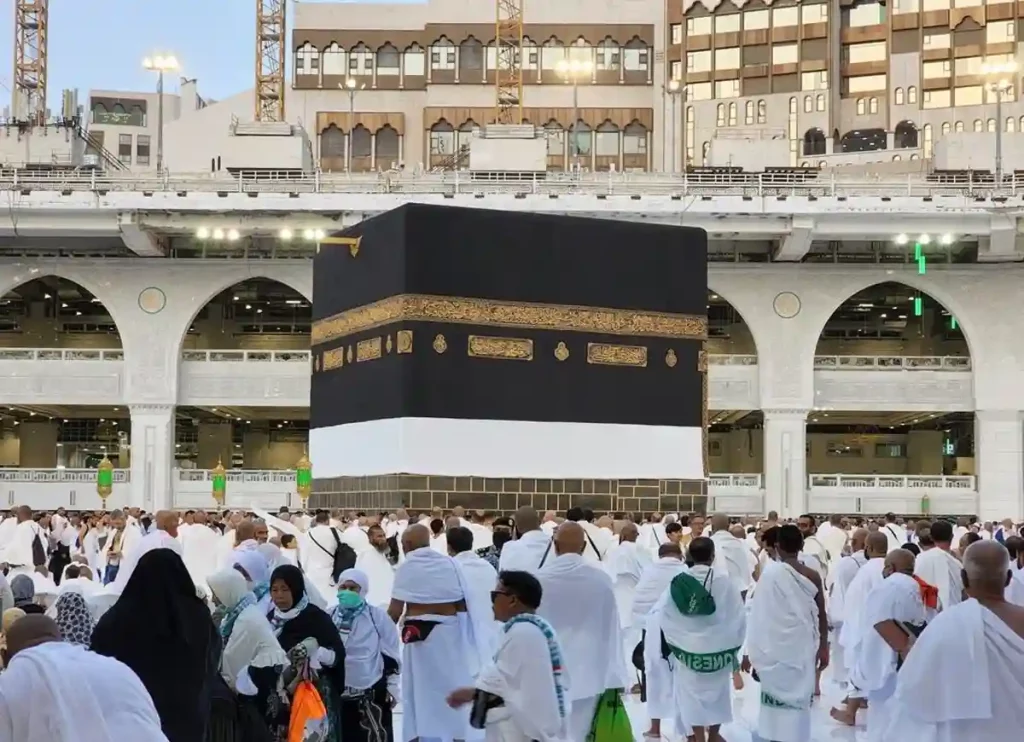Mecca Alert: Examining the Rising Temperatures in Mecca and the Potential Impact on Hajj Pilgrimage Experience” Climate change in the coming years and decades will expose millions of Muslims making the required pilgrimage to Mecca to deadly temperatures. An American Geophysical Union investigation conducted recently discovered.
“Future changes in the climate, with or in the absence of mitigation measures, could increase temperatures to levels that will exceed the threshold of extreme danger throughout 2020 and the years 2047 through 2052, and 2079-2086 with growing severity and frequency, as century advances,” according to the report, which was released on August 22, 2020.
The paper claims that during the last three decades, the temperatures recorded by the Mecca meteorological observatory have risen by two degrees Celsius, “well over” the average global temperature.
The pilgrimage to Mecca, or hajj, is one of the five pillars of Islam that every Muslim is required to perform at least once in their lifetime. Many people experience this late in age, especially those with few resources, which makes them more vulnerable to the severe temperatures.
elderly people at risk
Every year, for two to three weeks, millions of Muslims go to Mecca to complete the hajj. The various phases of the pilgrimage usually span five days and require 20 to 30 hours of exposure to the weather. The pilgrims are mostly older.
There have been some deadly stampedes during the hajj in the past. The deadliest occurred most recently in 2015. Although the research makes no connection between the deaths and climate change, it does imply that excessive heat has been and possibly still is a problem.
“Consistent with extreme temperatures and not necessarily linked in the past, stampede incidents that have resulted in the death of many pilgrims took place at Hajj in 1990 as well as in 2015, both in summer incidents that are associated with temperatures of the wet bulb above the USNWS threshold for danger,” said the report.
Citing earlier research, they report that in September 2015, when thousands of pilgrims perished in an encampment, the wet bulb temperature reached 27.3C, or 48.3C (119F) in real terms. In July 1990, there was a similar tragedy that claimed 1,426 lives at a temperature of just over 25C (41.7C or 107F).
“The reason for the stampedes remains unknown however, weather conditions could contribute to their intensity and death toll,” added the statement.
Scholars caution that Saudi authorities ought to take the initiative to lessen hazards, especially for the most vulnerable. Limiting elderly or unwell people to low-risk seasons of the year, when temperatures are unlikely to hit the threshold of high danger, is one strategy recommended by the report.
“If climate change continues along the current path or even that requires substantial mitigation, then aggressive mitigation measures will be needed,” it said.
Categories: PRAYER (Salat), ALMS (Zakat), SAWN (Fasting) HAJJ (Pilgrimage) & DUA (Supplications), Hadith and Tafseer, The Holy Quran, Quran Jaz 1- 114
Topics: Ushr and Zakat, Hijab, Arabic Corner, Faith, Islamic History, Biography, Sirat ul Nabi PBUH, Islamic Studies, Halal & Haram
Hajj:
- What is Ihram Haji ? | Hajj and Umrah-Quranmualim
- Importance of The Days of Zil Hajj | The Day of Arafah
- Define Menses during Hajj and Umrah | Mina in Makkah
- The Holy pilgrimage of The Messenger | The Rituals of Hajj
- 3 Types of Hajj | Tamattu | Ifrad | Hajj Qiran – Quranmualim

